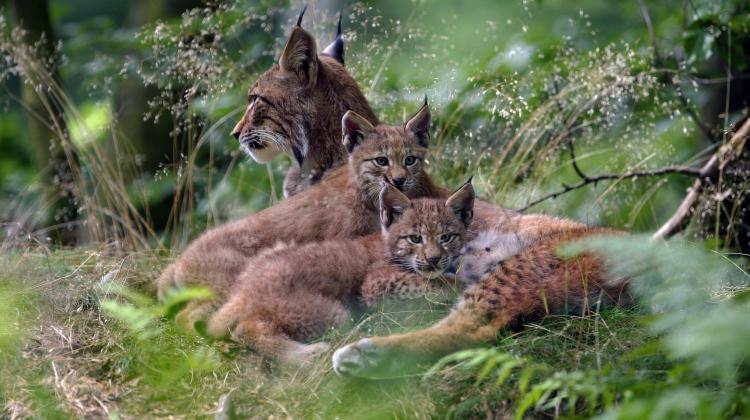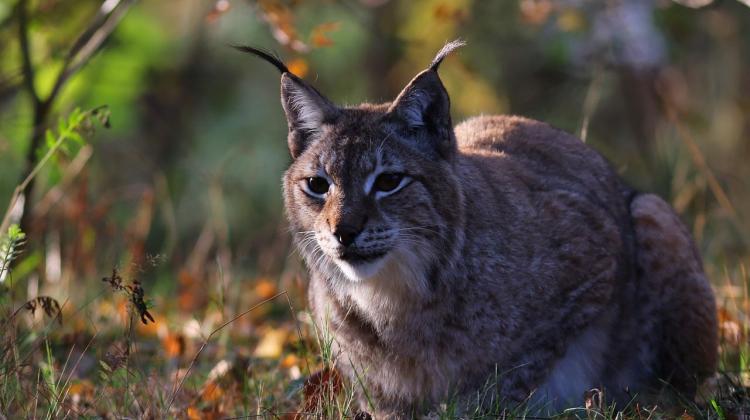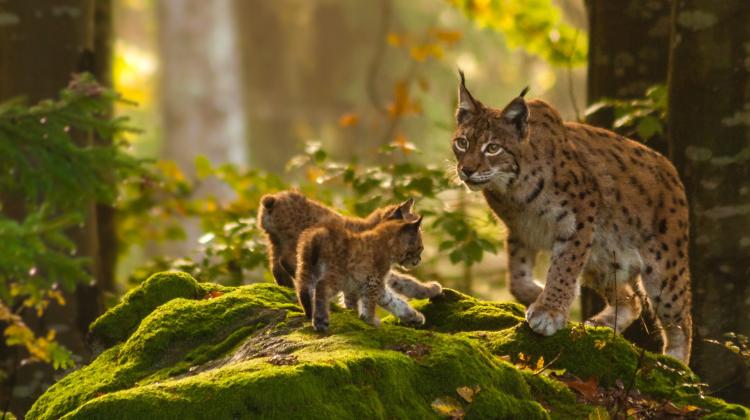Another Estonian lynx lives in the Masurian woods

Wild lynx from Estonia came to Masurian forests last Wednesday. Equipped with a transmitter collar that allows tracking its journey, the animal will join the othe four lynxes brought to Poland by WWF Polska.
The new lynx has been released in the area where naturalists recently observed the presence of a female lynx, brought from Estonia last year. "Lynxes are still in their mating season, hence our decision on place of the release of the new lynx" - said Stefan Jakimiuk of WWF Polska, organisation that campaigns for the conservation of lowland populations of this species.
So far, five lynxes from Estonia have been brought to the Masurian forests. Some of them travelled beyond the area of the forest complex. The female , released last year, remained within the Piska Forest. The recently brought male is another animal captures using the "wild-to-wild" method - literally from nature to nature. It involves the movement of wild animals. Lynxes brought by WWF Polska come from Estonia, because the Estonian population of this species lives in similar conditions to those in north-eastern Poland.
" The male is 2-3 years old and weighs more than 17 kg" - said Jakimiuk. "It has been fitted with a special collar with a transmitter that allows to track its journey. Monitoring helps to gather a lot of valuable data" - he added.
According to WWF Polska, this is the last chance to save the lowland populations of lynx in Poland. According to the results of winter tracking carried out in the past year, the lowland lynx population is estimated at about 40 animals. Lynx from the lowlands can thus share the fate of brown bears that have disappeared from the Polish lowland areas and survived only in the Polish part of the Carpathians.
"That is why since 2007 we engage in protection of the lowland lynx population in Poland. By April of next year, we plan to capture two more lynxes in Estonia and release them in Masuria" - said Jakimiuk. He reminded that WWF carries out a number of other activities that can help lynx survive. These include for example the preparation of occlusal plots for deer, but also restoring migration corridors for lynxes, which these animals could usu to move between isolated extensive forest complexes.
In addition to the "wild-to-wild" method, WWF Polska supports the introduction of lynx by Dr. Andrew Krzywinski method, "born to be free". It involves the placement of adult female lynx, living in captivity, in a special cage located in the forest. Small lynxes that are born in the cage are more familiar with the natural surroundings, and after becoming independent start a life in nature.
Estonian lynx population is estimated at 600 to 900 animals. Fluctuations are due to the availability of food. If the population of deer decreases as a result of severe and snowy winter, the population of lynx decreases as well. Recent winters in Estonia were snowy and sharp, hence the low number of deer and a clear decline in the number of lynx, including females with young.
PAP - Science and Scholarship in Poland
ekr/ agt/ mrt/
tr. RL
Przed dodaniem komentarza prosimy o zapoznanie z Regulaminem forum serwisu Nauka w Polsce.

















